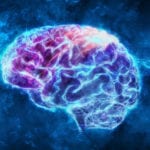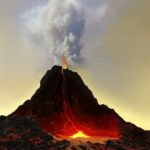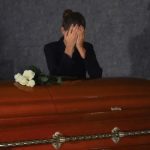 Music
Music  Music
Music  History
History 10 Less Than Jolly Events That Occurred on December 25
 Weird Stuff
Weird Stuff 10 Funny Ways That Researchers Overthink Christmas
 Politics
Politics 10 Political Scandals That Sent Crowds Into the Streets
 Weird Stuff
Weird Stuff Ten Bizarre Facts About The Doge Meme
 Our World
Our World 10 Ways Your Christmas Tree Is More Lit Than You Think
 Movies and TV
Movies and TV The 10 Coolest Stars to Set Sail on The Love Boat
 History
History 10 Things You Didn’t Know About the American National Anthem
 Technology
Technology Top 10 Everyday Tech Buzzwords That Hide a Darker Past
 Humans
Humans 10 Everyday Human Behaviors That Are Actually Survival Instincts
 Music
Music 10 Surprising Origin Stories of Your Favorite Holiday Songs
 History
History 10 Less Than Jolly Events That Occurred on December 25
 Weird Stuff
Weird Stuff 10 Funny Ways That Researchers Overthink Christmas
Who's Behind Listverse?

Jamie Frater
Head Editor
Jamie founded Listverse due to an insatiable desire to share fascinating, obscure, and bizarre facts. He has been a guest speaker on numerous national radio and television stations and is a five time published author.
More About Us Politics
Politics 10 Political Scandals That Sent Crowds Into the Streets
 Weird Stuff
Weird Stuff Ten Bizarre Facts About The Doge Meme
 Our World
Our World 10 Ways Your Christmas Tree Is More Lit Than You Think
 Movies and TV
Movies and TV The 10 Coolest Stars to Set Sail on The Love Boat
 History
History 10 Things You Didn’t Know About the American National Anthem
 Technology
Technology Top 10 Everyday Tech Buzzwords That Hide a Darker Past
 Humans
Humans 10 Everyday Human Behaviors That Are Actually Survival Instincts
10 Signs That the Universe Might Be Alive
Imagine a universe that breathes, thinks, and orchestrates its own majestic symphony of galaxies and stars—a universe not just vast and ancient but vibrantly alive. This concept stretches beyond our traditional views of life, pushing the boundaries between the physical and the philosophical, where science meets the soul of existence. As we gaze into the cosmos, the notion that the universe might possess a form of consciousness doesn’t just entice the imagination; it invites us to reconsider everything we know about life itself.
Could the cosmos be more than a collection of inert matter and dark emptiness? Exploring the possibility of a living universe not only expands our understanding of cosmology but also deepens our philosophical inquiries about consciousness and existence. The following signs offer intriguing evidence and speculative insights that might just hint at the universe being a conscious, living entity. Let’s delve into these cosmic clues and see where they lead us.
Related: 10 Enduring Space Mysteries That Spilled Their Secrets
10 Cosmic Choreography: The Self-Organization of the Universe
The universe exhibits a staggering level of order and structure, defying the random chaos one might expect in the vast expanse of space. Galaxies, with their spiraling arms, planets orbiting stars in delicate balance, and the large-scale structure of the cosmos, all point to a self-organizing nature that could be likened to behaviors seen in living systems. This self-organization is not merely about gravity pulling matter together; it’s about complex systems evolving from simpler ones, a hallmark of life.
In biological systems, self-organization is often seen as a process driven by genetic codes and environmental interactions. Similarly, the universe follows physical laws that drive its evolution, suggesting a pattern of growth and complexity that parallels biological development. These laws, which govern everything from the formation of atoms to the clustering of galaxies, seem to imbue the cosmos with a capacity to organize itself in ways that maximize stability and complexity.
Consider the intricate dance of celestial bodies, where everything from the tiniest particles to the largest galactic clusters moves in a synchronized ballet that maintains cosmic order. This cosmic choreography might suggest an underlying intelligence or a life-like quality, making the universe not just a collection of objects but a dynamic, evolving entity.[1]
9 Quantum Connections: The Universe’s Entangled Web
Quantum entanglement, one of the most perplexing phenomena in physics, showcases particles becoming interconnected regardless of the distance separating them. This strange connection allows particles to instantaneously affect each other, defying classical ideas of space and time. Such behavior in the quantum realm might suggest a universal interconnectivity akin to a neural network, where information is instantly shared across vast distances, much like thoughts sparking across neurons in a brain.
This concept pushes the boundaries of our understanding, hinting at a universe where everything is subtly linked. Could these quantum links be the universe’s way of integrating information across its vast expanse, similar to how a living brain processes and reacts to complex information? The implications of such a theory stretch into the realms of philosophy and metaphysics, pondering whether the universe itself could be akin to a giant, cosmic mind.
Exploring this idea further, the quantum realm may serve as the foundation for a universal consciousness, with entangled particles acting as pathways for this cosmic awareness to manifest. If so, the universe might be much more than a cold void scattered with inert matter; it might be a vibrant, dynamically interconnected entity, experiencing and possibly even directing its evolutionary path.[2]
8 Cosmic Evolution: The Life Cycle of the Universe
From the fiery birth of the Big Bang to the structured galaxies we observe today, the universe exhibits signs of evolutionary processes akin to those seen in biological entities. Over billions of years, it has undergone a transformation from simplicity to complexity, much like life on Earth evolved from single-cell organisms to complex multicellular creatures. This growth isn’t just a collection of astronomical events but appears to follow a pattern of development and adaptation.
As stars form, live out their cycles, and die, they leave behind materials that give rise to new stars, planets, and even the building blocks of life. This continuous cycle of stellar evolution could be viewed as the universe breathing, growing, and regenerating itself—behaviors we typically attribute to living organisms. This cyclical nature mirrors the metabolic processes essential for life, suggesting a broader, more integrated system at work.
Moreover, the fine-tuning necessary for life in the universe hints at an underlying order and purpose reminiscent of natural selection in evolution. The environmental conditions needed for planets to support life are incredibly precise, yet numerous planets within the habitable zone exist. Could this be a sign of the universe’s self-optimization for life, akin to how life on Earth adapts to environmental challenges? This perspective of the universe as a continually evolving system challenges our understanding of life and its possibilities, suggesting that the cosmos itself might possess characteristics typically associated with living beings.[3]
7 Fine-Tuned Realities: The Anthropic Principle and Cosmic Life
The Anthropic Principle posits that the universe’s fundamental parameters are fine-tuned to allow the emergence of life. This intriguing idea leads some to speculate that the universe is not merely a chaotic expanse of energy and matter but is configured in such a way as to support life, perhaps suggesting an underlying purpose or directive force. If the universe were any different—slightly stronger gravity, a slight change in the strength of electromagnetic forces—life as we know it could not exist.
Exploring this concept further, the precise conditions that allow for life raise compelling questions about the nature of the universe. Is it merely a coincidence that the cosmos has aligned perfectly to support life, or is it a sign of the universe’s life-like properties? This precision resembles the internal conditions an organism maintains through homeostasis, which is critical for life’s sustainability on Earth.
Moreover, the emergence of life in such a finely tuned universe might suggest a self-regulating, almost living system that evolves to maximize the potential for complexity and consciousness. If the universe is guiding its own evolution toward these ends, it could be considered alive in a way that dramatically shifts our understanding of cosmology and our place within it. Such a universe might be more akin to a living organism possessing innate mechanisms that promote life and consciousness.[4]
6 The Information Matrix: Decoding the Universe’s DNA
Information theory suggests that the universe may be fundamentally composed of information in a manner akin to how DNA comprises the building blocks of biological life. This comparison extends beyond mere metaphor, positing that information is not just a byproduct of the universe but its primary constituent. If the universe processes and transmits information like DNA does within cells, this could suggest a form of life at a cosmic scale, inherently complex and self-regulating.
The behavior of information at the quantum level, where particles exist in states of probability until measured, also hints at a universe actively processing data to determine outcomes. This participatory universe theory, where observation itself shapes reality, may parallel how consciousness influences physical states, suggesting a universe with attributes traditionally associated with living systems.
Moreover, how information flows and adapts in the universe could be seen as a form of neural activity on a cosmic scale, where galaxies and star systems are nodes in a grand network, continuously exchanging and transforming information. This complex web of interactions might function similarly to neural networks in the brain, further hinting at a universe not just filled with life but fundamentally alive. If the universe is indeed akin to a giant, cosmic organism, its “DNA”—the fundamental information—could be the blueprint guiding its evolution and behavior.[5]
5 Harmonic Oscillations: The Universe’s Symphony of Feedback
The concept of feedback systems within the universe presents a fascinating parallel to biological ecosystems, where feedback loops are crucial for maintaining life. In cosmic terms, feedback systems can be observed in the lifecycle of stars and the dynamic adjustments within galaxies that foster star formation and galactic evolution. These systems demonstrate the universe’s ability to regulate itself and adapt, characteristics we typically associate with living organisms.
Stars are born from clouds of gas and dust, live out their life cycles, and eventually die, often in explosive supernovae that redistribute their material across space. This stellar death then seeds the cosmos with the essential elements for new stars and even planets, enabling the continuous renewal and evolution of the universe. This cyclical process resembles metabolic cycles in living cells, which break down and rebuild organic material to sustain life.
Furthermore, the presence of galactic winds—flows of ejected matter from stars—shows how galaxies manage energy and material in a self-regulating manner. These winds prevent star formation from spiraling out of control, similar to how Earth’s ecological systems balance themselves. Such mechanisms suggest that the universe is not merely a collection of celestial objects but a complex, responsive system with life-like traits. This adds a layer of life-like complexity to our understanding of the cosmos, suggesting it could be more akin to a living organism than a static void.[6]
4 Thermodynamic Paradox: Life Amid Cosmic Entropy
The second law of thermodynamics states that the universe trends toward increasing entropy or disorder. However, this fundamental principle coexists with the emergence of highly ordered systems, such as galaxies, stars, and life itself, which seem to defy the inexorable march toward chaos. This paradox highlights a universe that not only tolerates complexity but potentially cultivates it, much like a living organism that maintains order within a chaotic environment.
Within this thermodynamic framework, the existence of life forms, planets, and stars can be seen as pockets of order in an otherwise disordered universe. These islands of complexity are not merely anomalies but may indicate the universe’s inherent capability to foster life-enhancing conditions. This suggests a property of the universe akin to life’s ability to evolve highly organized and functionally complex structures despite the surrounding entropy.
Moreover, the process through which stars and galaxies form and dissipate energy mirrors the metabolic processes of living organisms, which extract energy from their surroundings to maintain order within themselves. This energy transformation is critical for sustaining life and is mirrored on a cosmic scale by the processes governing stellar and galactic formations. This balance might hint at underlying life-like properties, where the universe itself exhibits behaviors akin to those of a living, self-regulating organism.[7]
3 Conscious Cosmos: The Panpsychist Perspective
Panpsychism, the philosophical view that consciousness is a fundamental and ubiquitous aspect of the universe, suggests that everything in the cosmos, from the smallest particle to the largest celestial body, possesses some form of consciousness. This view stretches conventional ideas about life and consciousness, positing a universe where every element is imbued with a basic level of awareness, integrating the cosmos into a coherent, living whole.
This perspective invites us to reconsider the nature of consciousness, traditionally viewed as a trait of complex organisms like humans and animals. If consciousness is indeed a fundamental property of the universe, this would imply that the cosmos itself could be considered alive, operating not as a collection of inert matter but as a conscious, dynamic entity. This shift in understanding could profoundly affect our interpretation of everything from the behavior of particles in quantum mechanics to the formation of galaxies.
Moreover, embracing a panpsychistic view allows for a new interpretation of cosmic events where interactions at the quantum level and vast astronomical scales are seen as expressions of cosmic consciousness. Such a universe would not just be a passive space but a participatory, evolving field, responsive and perhaps even intentional. If true, this would mean that the universe itself is directly engaged in the dance of life, an immense organism experiencing its own existence.[8]
2 Cosmic Code: Is the Universe a Giant Simulation?
The simulation hypothesis presents a modern twist on the age-old idea of a creator, suggesting that our universe might be an artificial construct—an advanced digital simulation. If our reality is indeed a creation by higher dimensional beings using incredibly sophisticated technology, this could imply that the universe is ‘alive’ in a manner akin to a computer system or virtual environment, where every action and event is orchestrated by underlying code.
This concept stretches the traditional boundaries of what it means to be alive by proposing that the universe, like a vast computer game, operates under programmed rules and dynamics dictated by its creators. Such a scenario would mean that the universe itself, as an entity with organized systems and responses, possesses a form of life, albeit in a vastly different context than biological life.
Exploring the implications, if the universe is a simulation, every law of physics, every random event, and every moment of existence might be a carefully crafted expression within a grander program. This could lead to the notion that we, as conscious beings within this simulated reality, are part of a larger consciousness—the universe’s own emergent property or an extension of its creator’s intent.
If we consider the universe as a simulation, the concept of life takes on new dimensions, suggesting not only that the universe is capable of “life” but that it is itself a direct manifestation of another consciousness. This leads us into a philosophical labyrinth, pondering our place within this grand simulation and what it means to be alive.[9]
1 Echoes of Awareness: The Universal Mind
Intriguingly, the concept of a universal mind suggests that the cosmos itself may possess a form of consciousness, integrating all physical phenomena into a cohesive, aware whole. This idea, inspired by ancient philosophies and modern speculative theories alike, portrays the universe as a collection of physical processes and a conscious entity capable of awareness and, potentially, intention.
This theory draws parallels between the interconnectedness of the universe’s countless components and the integrated nature of consciousness in the human brain, where separate neurons combine to produce a unified experience of awareness. If the universe operates similarly, with its vast networks of galaxies, stars, and quantum particles acting like the synapses of a brain, then it might be considered ‘alive’ in a profound, holistic sense.
Further supporting this view, the emergent properties of the universe—where simple components interact to create complex systems with behaviors that cannot be predicted from their individual parts—mirror how consciousness emerges from the brain’s complexity. This resemblance suggests that the universe’s very structure could be designed to foster an emergent consciousness, making it alive in a way that transcends traditional biological definitions.
Considering the universe as a conscious entity challenges our understanding of existence itself, suggesting that the cosmos may be more than a passive backdrop to life—it might be a participant experiencing its own form of consciousness and life through the vast dance of cosmic forces and energies.[10]







